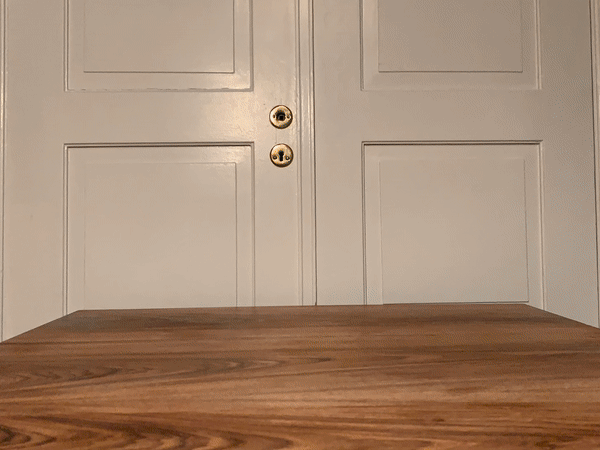E-magine
MY ROLE
Created sacrificial prototypes and photographer during the research phase;
Acted as facilitator and contributor during the ideation phase;
Designed and built the form of the prototype during the production phase;
Share home appliances among neighbors with extra care
BRIEF Make an electronic product that has a positive glocal impact(During Sustainable Tangible Product Class at CIID)
CONCEPTShare home appliances among neighbors with extra care
TEAM MEMBERS
Aakash Aggarwal
Sophia Höfling
ADVISORS
Felix Heibeck
Johanna Tunlid
Victor Johansson
Context
E-waste as a global problem
Each day thousands of new products are launched in the market, turning older ones obsolete. The life span of devices is getting shorter and shorter. Many of these devices are rarely used before they are discarded. As a result, more and more unnecessary e-waste is reaching landfills leading to an increasing amount of toxic chemicals in soil, water, and air. This is especially true for household electronic appliances.
Lack of care in shared products
Shared products are often troubled by the issue that people don’t take good care of them, which is especially problematic when the hardware is not designed for sharing.
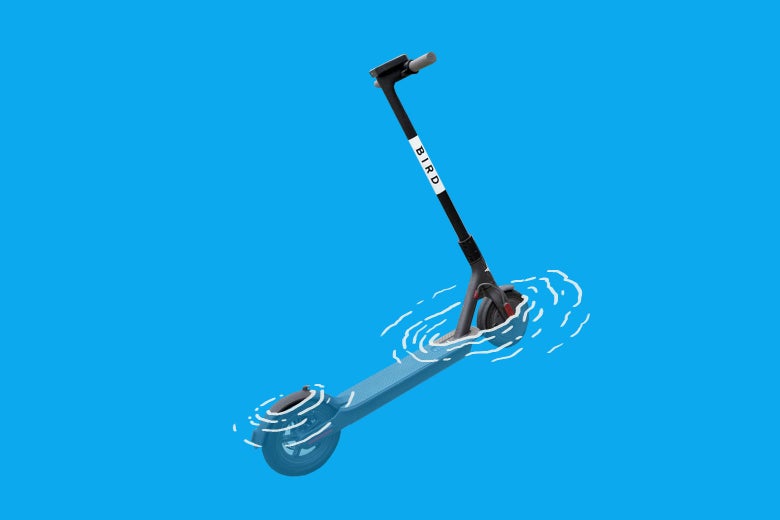 Photo illustration by Natalie Matthews-Ramo/Slate. Photo by Bird
Photo illustration by Natalie Matthews-Ramo/Slate. Photo by BirdConcept
E-magine is a service that enables neighbors to responsibly share seldom used home appliances while incentivizing them to take well care of the devices.
The E-magine service comprises of 3 things - device assistants, an app, and a buyback program:
The E-magine service comprises of 3 things - device assistants, an app, and a buyback program:
1. Device assistants will:
- give instructions on how do you use and maintain it;
- react to the way you treat it thus ensuring you take appropriate care;
- remind you of the expiration of your rental period;
- give instructions on how do you use and maintain it;
- react to the way you treat it thus ensuring you take appropriate care;
- remind you of the expiration of your rental period;
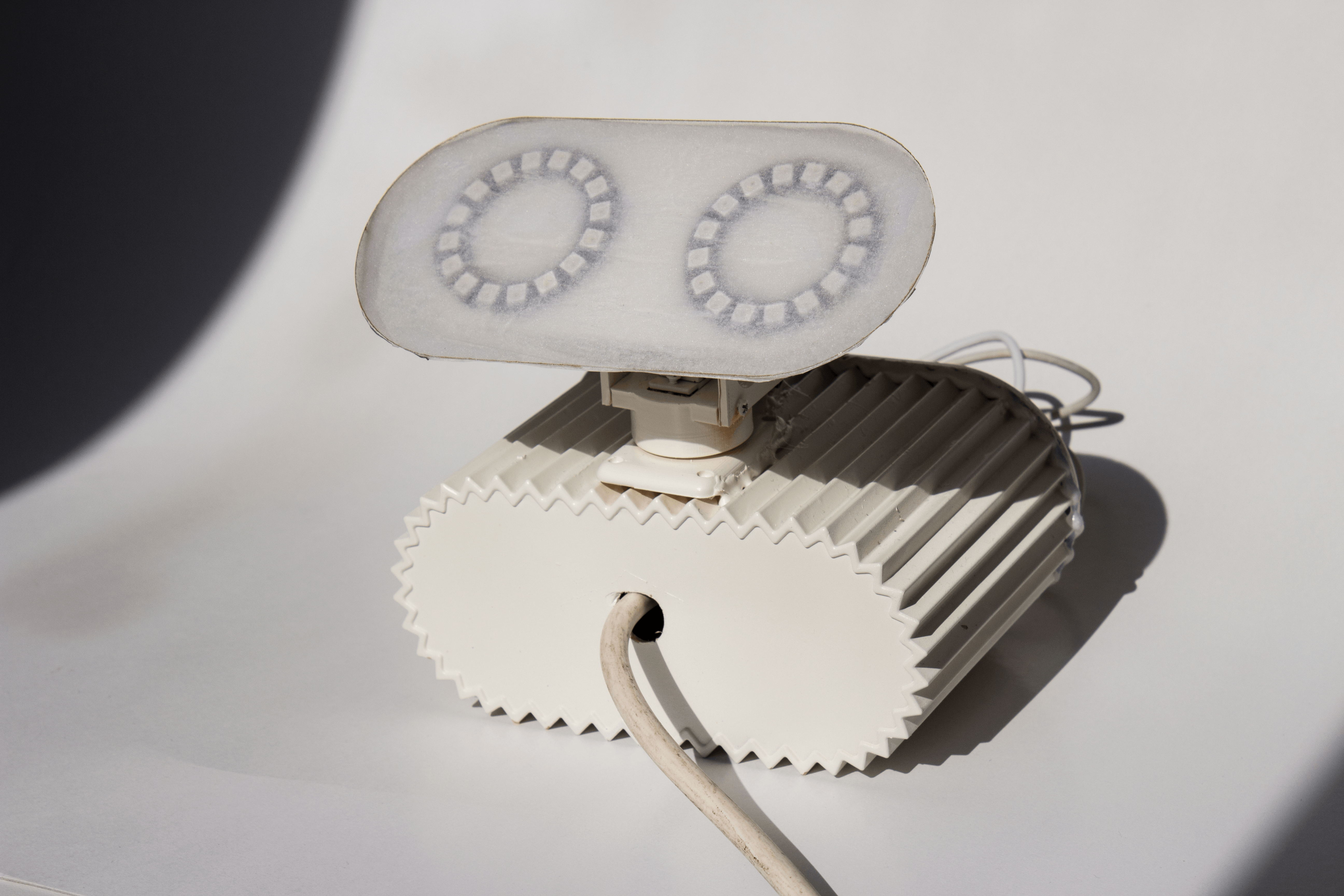 Device Assistant
Device Assistant
The assistant comes in the form of a robot attached to the plug of the device. The design of the assistant is meant to create an emotional link between the shared appliance and the user. It communicates via sound and slight movements of its head and LED-powered “eyes”.
2. An app powers the sharing model by handling reservations and payments.

E-lounge

Reservation
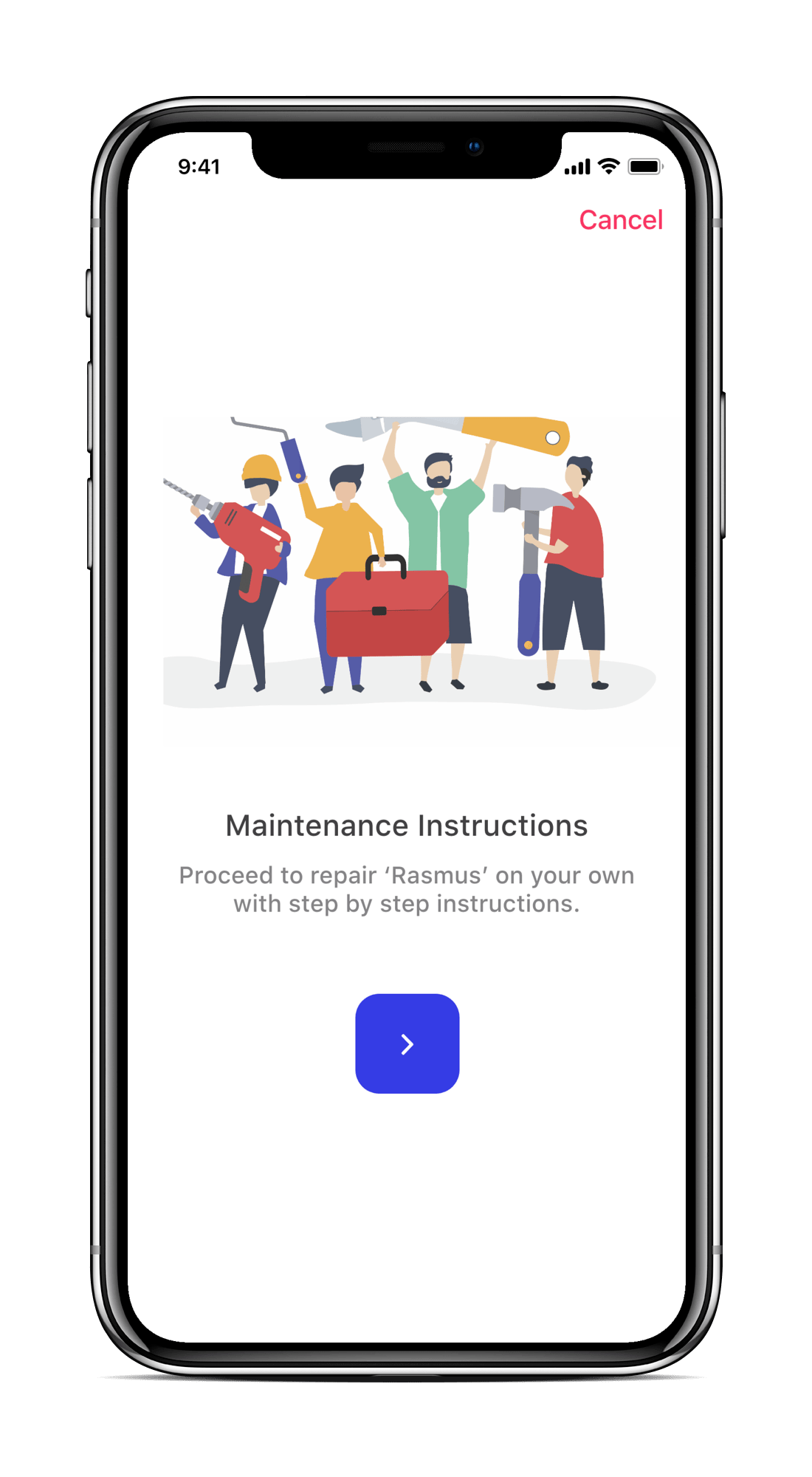
Maintenance
3. E-magine ensures that existing resources are being used by buying back home appliances from the households that later on benefit from the service.

Service System Map
Process
 Process Overview
Process OverviewPreparation
We started our research from looking at the topic about electronic waste, in both global and local scale. After doing some secondary research, we locked our eyes into home appliances and how might we design to help replace ownership with sharing service with these products to reduce the waste.
In the spirit of generative research, we decided to embed our research assuptions in some sacrificial prototypes.
In the spirit of generative research, we decided to embed our research assuptions in some sacrificial prototypes.

Initial Sketch
 Sacrificial Prototype
Sacrificial Prototype
 Storyboard
StoryboardField Research
We chose the student dormitory as our research field as it fitted into the sacrificial scenario we meant to test. In total, we conducted eight in-depth interviews and two intercept interviews.
 Scenario walk-through
Scenario walk-through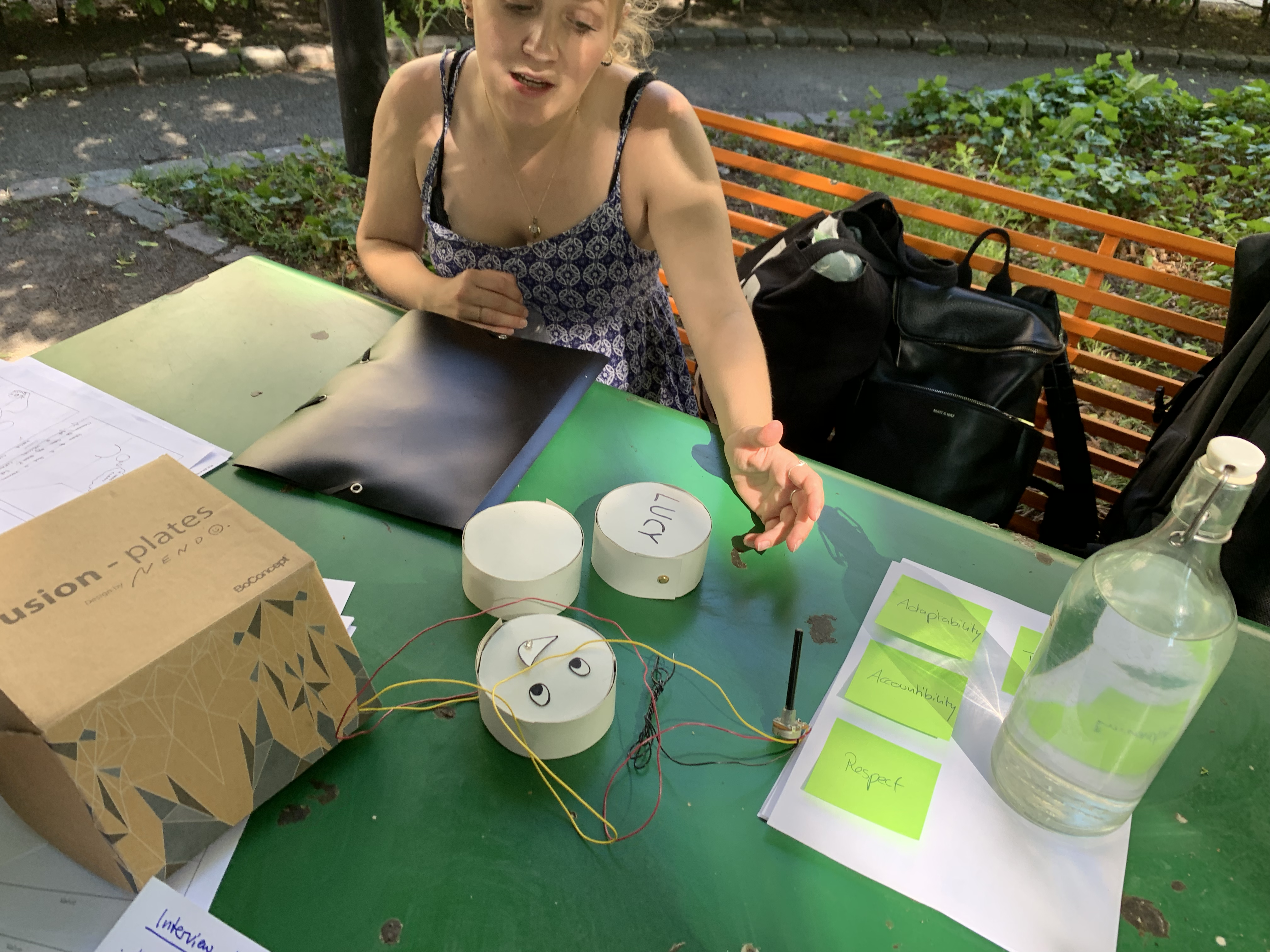 Feedback about prototypes
Feedback about prototypes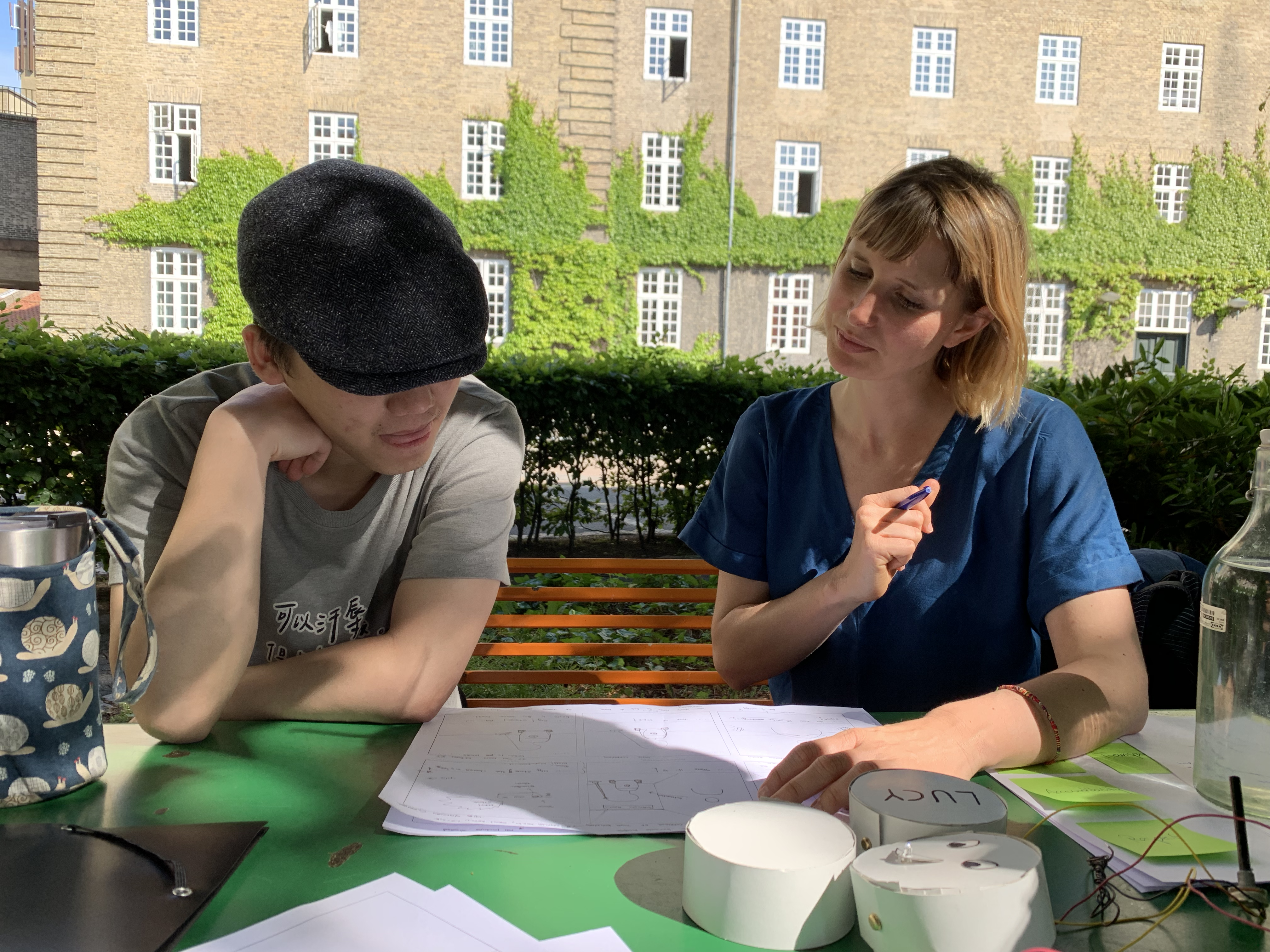 In-depth interview
In-depth interviewSynthesizing
Coming back from the field, we downloaded our data and made affinity mapping.
The insights were:
1. It is necessary to integrate a mechanism to protect sharing appliances and enable it to work
2. Reminders should not be too “hot” to make people feel bothered
3. The emotional attachment could help incentivize sense of care on the sharing of home appliances
These insights helped us reconfigure our concept and moved onto overall experience prototyping.
The insights were:
1. It is necessary to integrate a mechanism to protect sharing appliances and enable it to work
2. Reminders should not be too “hot” to make people feel bothered
3. The emotional attachment could help incentivize sense of care on the sharing of home appliances
These insights helped us reconfigure our concept and moved onto overall experience prototyping.
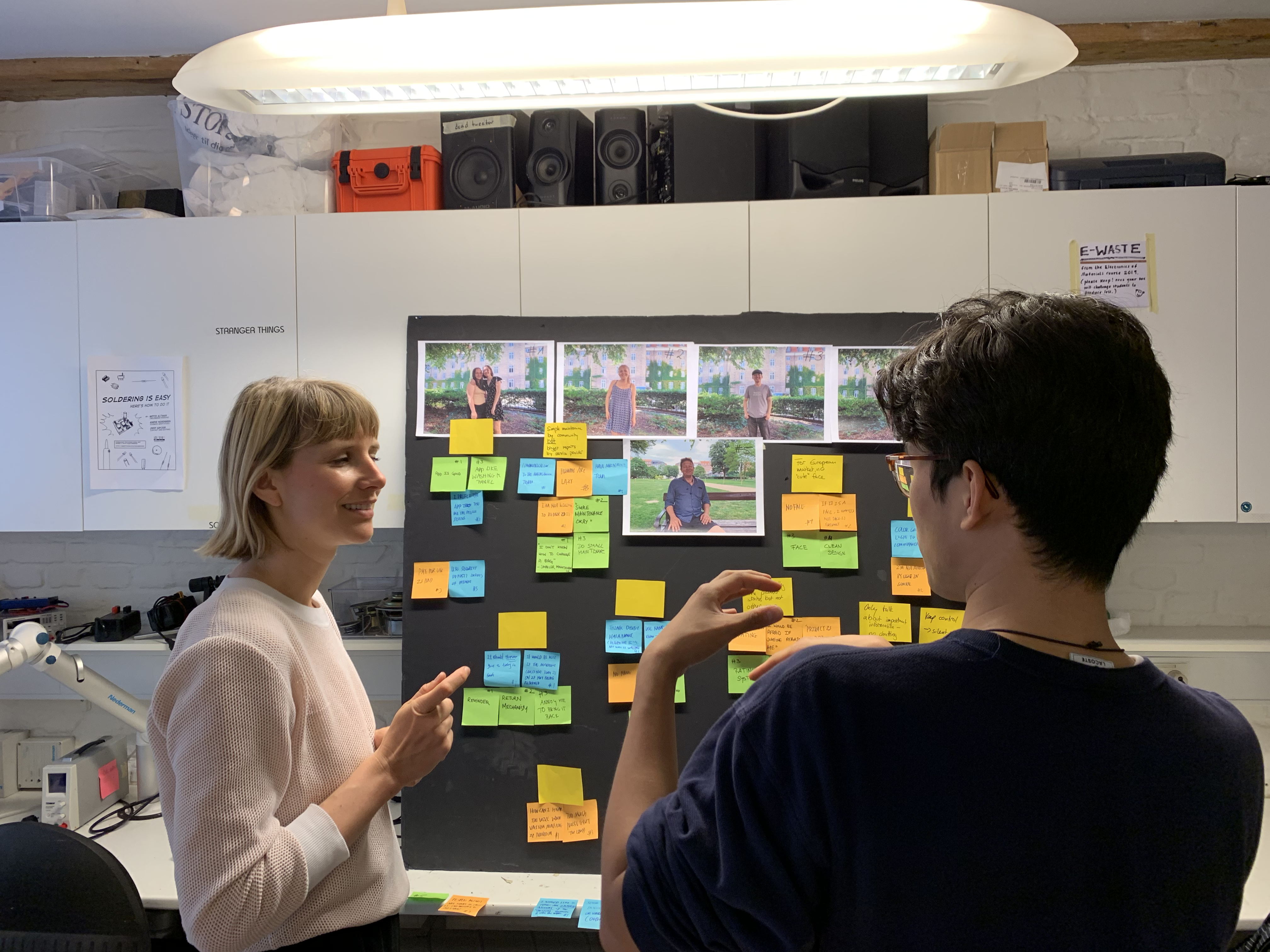 Affinity mapping
Affinity mappingInitial UX Video
We decided to apply the insights we gathered into our design by using a video sketch to frame different touchpoints across the whole experience. Light and monotone sounds were used as notification cues, and basic app screen wireframes were built in the scenario.
Production Phase
 Shooting session
Shooting session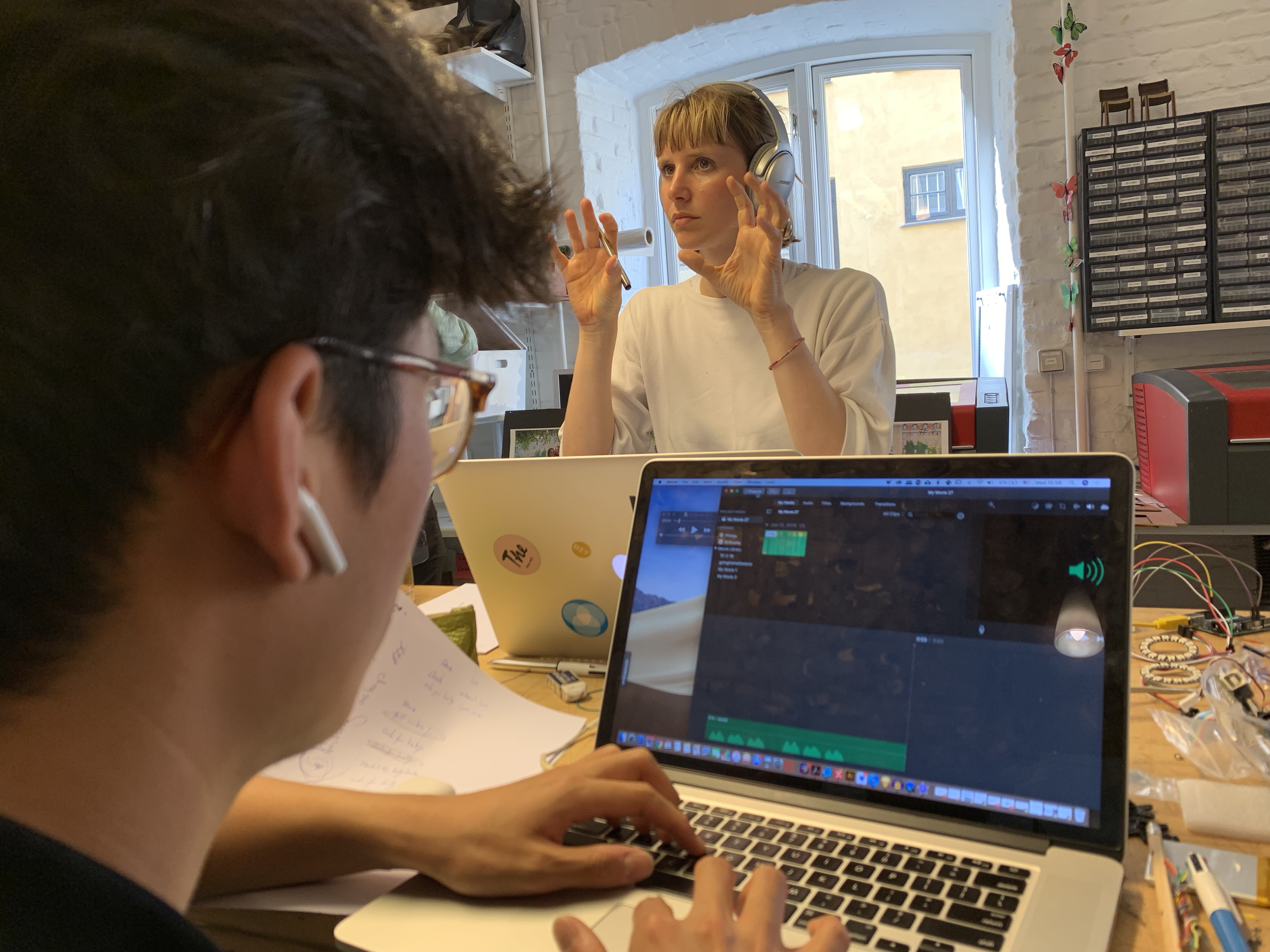 Sound Picking
Sound Picking
